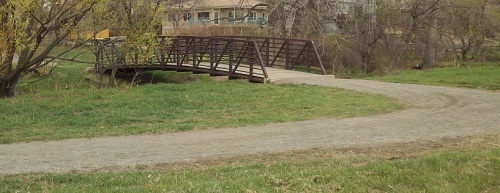I often hear comments like “We tried Facebook and it didn’t work” or “I spent $4000 on Google AdWords and didn’t get anything”. The first question I ask is “What were your goals?” and follow up with “How were you measuring results?” The answer, all too frequently, is a blank stare.
Throwing money at problems is a solution best reserved for government. Well, I’d prefer they not use it either but that is a different discussion. If you are planning to do any kind of online marketing you need to have a plan. Otherwise you can just drive down the highway, open your wallet, and throw the money out the window. You have just as good a chance of someone picking it up and tracking you down as you do getting any kind of results that will help you grow your business.
Here are the important elements to putting together an online marketing plan:
Understand Elements: What are the parts of your online marketing. Often the most important one is the one most overlooked – the website. Often the website is the centerpiece of the marketing because it is the piece you have the most control over. Other elements include:
- Facebook
- Twitter
- Youtube
- Paid Search (usually Google AdWords)
- Paid Advertising (on other web sites)
- Email campaign(s)
- Foursquare
- Landing Pages (usually a part of your website)
Understand Offline Elements: Usually an effective Internet Marketing campaign is folded into a larger marketing campaign. This might include a direct mail campaign, distributing flyers, newspaper advertising, ads on bus benches, billboards, or a variety of other venues. The important part of bringing these together is understanding how they work. For example QR codes can be an effective way to move people from print to digital. It is also important to maintain consistency in brand and message across media.
Start with the End in Mind: You have to have a clue – that is, it helps to know where you want to go so that you can use your resources wisely. So determine what success will look like:
- Will it be an additional $x in revenue each month?
- Will it be x number of new customers?
- Will it be x number of new leads?
- Will it be x number of downloads of a video or file?
- Will it be x number of new appointments?
You can add to this list as needed. The important thing is that the end is geared toward helping you grow. Once you know where you are going, you can begin to plan how to get there.
Determine Parts to Include: Now you are ready to figure out what all needs to be included. If the goal is to generate leads for your business, you might determine that paid advertising or paid search aren’t the right venue. But running a contest of some kind on Facebook and Tweeting about it on Twitter might be just right. One of the strengths of Internet Marketing is that you can change your mind pretty quickly. If the paid search yields zero results, you aren’t stuck with it – you can stop within minutes. Or start it nearly as quick.
Determine Integration and Flow: It is still important to keep the big picture in mind. If you’re doing a print campaign as well and using a QR code to get people to your Facebook page, test the code with several different devices to make sure it works. Boy it gets embarrassing (and expensive) to direct people to the wrong (or a non-existent) page. Another thing to consider is steps in the process. While the ultimate goal may be getting them to fill out a form on your site, getting them to first “Like” you on Facebook makes it much easier for you to reach out to them in the future.
Determine Measurement Points: We strongly recommend the adage “What gets measured is what gets done” So determine what all you will measure. A good example of this can be seen in the travel industry. While a very large percentage of folks research travel online, a much smaller percentage actually book online. So bookings would be one thing to measure but “intent to travel” is also something to try to measure. This can be measured by how many people actually viewed a deal on your web site or Facebook page. Or by how many people checked pricing. Or by how many people liked your page.
A key here is to have several measurement points. If you’re just looking at online bookings for example, you might consider the campaign a failure even though overall bookings are up – an indication that people are researching online and then calling. Without several measurement points, you might miss what is actually happening. Of course you can always build in better tracking by adding text like “mention deal 23 when calling” to your online ads.
Determine Evaluation: Once you’ve got the parts above figured out you can determine how you’ll evaluate success. The most obvious measure will be the one that impacts your bottom line. But you also want to be flexible and look at your results. If your goal was x number of downloads of that whitepaper you worked so hard and you fall short, you could say, “I give up” or you could look and see that you actually got more Facebook “likes” than you anticipated and that once you were liked, it was 25% more likely that someone would do business with you.
So the thrust of this part is to keep an open mind and look at all of your metrics to better understand what is working and what is not. For the parts that are working, see if you can tweak them to make them more effective. For those that aren’t working, determine whether tweaking or tossing is the best course of action. Then start your next campaign, incorporating everything you’ve learned from the one just completed.


 Today I’ll use a bridge analogy. This bridge on the right gets me where I’m going. It is very functional. One side of the bridge looks much like the other side. Many web firms can give you a web site. But most of those firms will give you a site that looks both like most of the rest of their web sites and like most of the sites that are out there on the internet.
Today I’ll use a bridge analogy. This bridge on the right gets me where I’m going. It is very functional. One side of the bridge looks much like the other side. Many web firms can give you a web site. But most of those firms will give you a site that looks both like most of the rest of their web sites and like most of the sites that are out there on the internet. And just like every bridge has many of the same parts but a good bridge fits in and enhances its surroundings, that is what our websites do. Some firms ask you what template you like best. We never start with a template, instead we spend time listening to you to determine what you need. Then we bring our expertise to bear to build a custom look that not only carries your brand forward but also draws the visitor in.
And just like every bridge has many of the same parts but a good bridge fits in and enhances its surroundings, that is what our websites do. Some firms ask you what template you like best. We never start with a template, instead we spend time listening to you to determine what you need. Then we bring our expertise to bear to build a custom look that not only carries your brand forward but also draws the visitor in. Most business owners understand the value of having a Unique Selling Proposition, that special something that sets them apart from the rest of the competition and makes folks choose their company when there are lots of choices.
Most business owners understand the value of having a Unique Selling Proposition, that special something that sets them apart from the rest of the competition and makes folks choose their company when there are lots of choices.